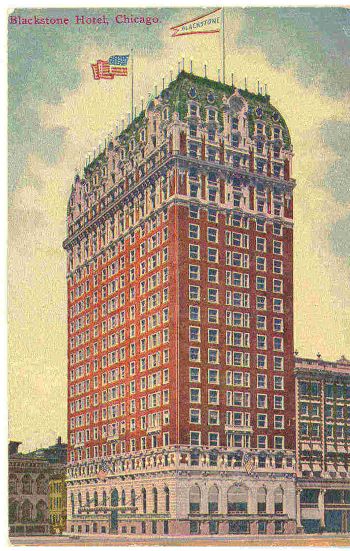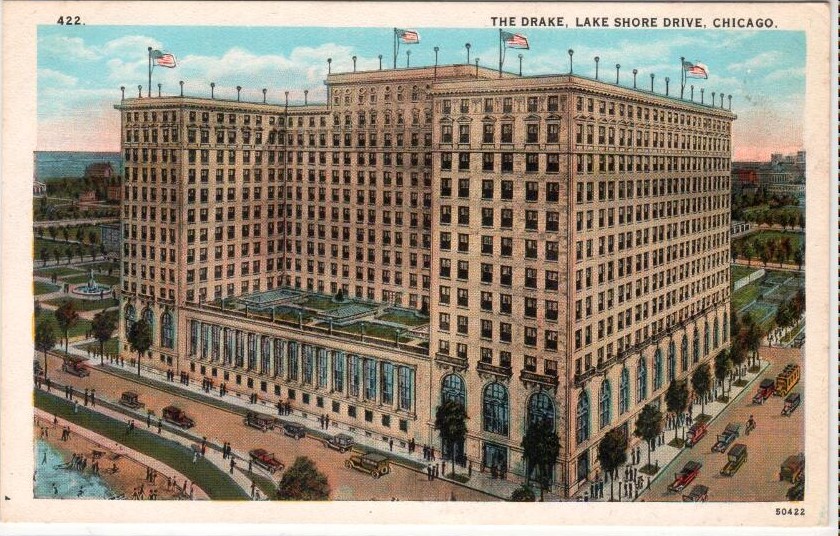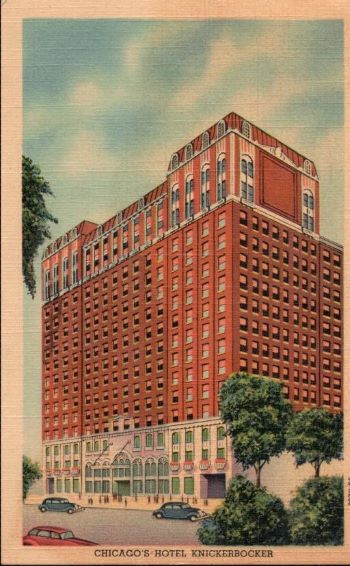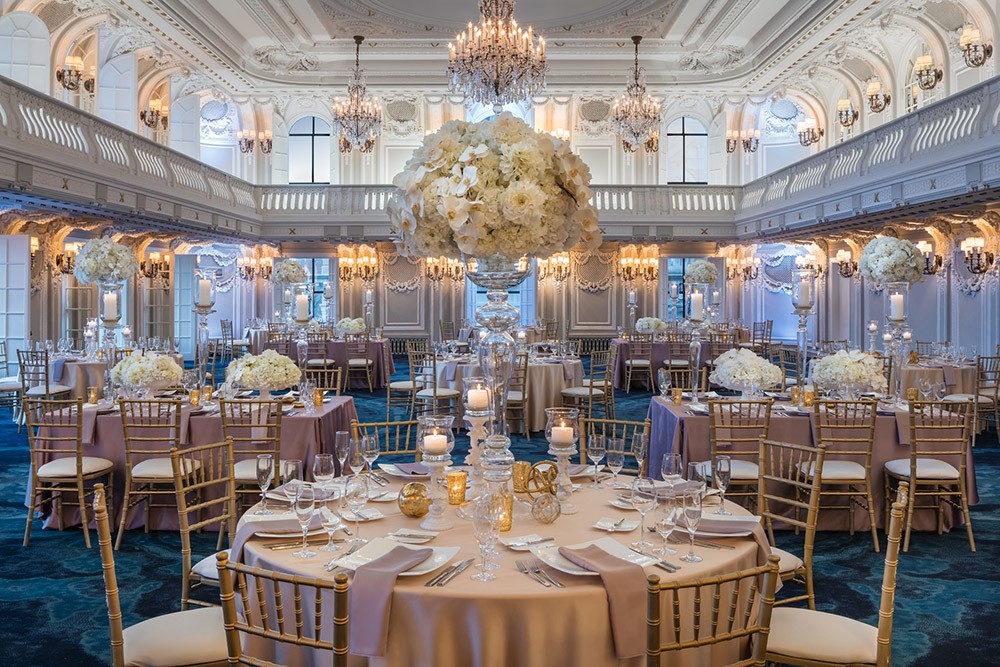Chicago is a city that is defined by its architecture, giving rise to the term “skyscraper” with the construction of the first steel-frame the Home Insurance Building in 1885.
The city is also home to several historic hotels that helped define the modern concept of meetings and conventions accommodations.
Meetings industry veteran and Roosevelt University Manfred Steinfeld School of Hospitality & Tourism Management professor William R. Host actually wrote a book on the subject of historic Chicago hotels, and said that many of them were built firmly with the idea of large meetings and conventions in mind.
A resident of Chicago for more than 40 years, Host co-authored the book Early Chicago Hotels, available from Arcadia Publishing.
[Related Content: These 5 Historic Ballparks Are Made for Hosting Events]
Host said most of the city’s grand dames were built between the Great Fire of 1871 and World War I, with only The Blackstone, built in 1910, surviving to this day.
Most of what one would consider the grand historic properties that now exist were built following the Great War.
“When The Blackstone was built in 1908 the owner decided he needed to capstone that building and corner the market on Michigan Avenue by building The Drake at the other end of Michigan Avenue,” Host said. “The Drake, Blackstone, Palmer House and Hilton [Chicago] clearly were looking at the meetings and events industry when they were built.

(Photo: Palmer House [1875-1926] and Palmer House [1926-present])
“Obviously, it’s the grandeur of it—certainly the nostalgia of a different day and time” Host continued. “It’s something we don’t see much anymore.”
With that grandeur of a different age can come some obstacles to modern-day meeting venue expectations, however.
“You’ve got hotels that have pillars that are almost running down the middle of the room, chandeliers that are hanging really low and meeting rooms that are on different floors than the grand ballroom,” Host said. “Look at the Chicago Hilton. When it was first built, I think it had 3,000 guest rooms, and now it’s down to a thousand plus.
“They had to knock out walls [to provide a larger room size guests now expect],” he added. “And some they had to get rid of venues such as their barber shop and they turned it into the Starbucks or whatever, but I think there’s still some feeling for the history.”
[Related Content: The Central Station Hotel Opens in Historic Memphis Building]
Using a historic property can also come with limitations when it comes to, say, theming receptions and other special events.
“I think that’s a challenge with the older properties, in that it screams a particular era, so it’s not a place where you’re going to do a country and Western dinner,” Host said. “It clearly calls for an upper-scale, more elegant, black-tie, long dress affair, so there is that limitation and that challenge that they have. In the modern hotels you really have a blank slate you can play with.”
Potential Hurdles of Holding a Meeting in a Historic Hotel
Host said that meetings and conventions planners should make sure to examine the following hotel facilities and services in historic hotels to ensure that they will be up to the modern standards demanded by today’s meetings:
- Audiovisual: Properties that were built in the days when telephones were considered cutting-edge technology can sometimes have issues with the backbone required for modern AV technology and internet connectivity.
- Rigging points: Having the necessary amount of hang points can be problematic in a hotel built in a different era.
- Chandeliers: Considered the epitome of luxury when many large historic hotels were built, today chandeliers can interfere with the functionality of meeting space.
- Carpeting: Often times ballrooms with dance floors can have carpeting covering them, which can pose a tripping hazard in some instances.
- Elevators: Many historic hotels also have historic elevator systems, or inconveniently located elevator banks.
- Lack of ramps: Having been built long before the days of the Americans with Disabilities Act, many historic hotels may pose issues for attendees with mobility and other challenges.
- Abundance of stairways: Hotels built before modern elevator systems were available often have an abundance of stairways, which can encroach up meeting spaces and pose challenges for attendees with disabilities.
- Multiple rooms on different levels: The modern concept of having all meeting space conveniently located on one floor was not considered a key feature when many historic hotels were built.
- Pillars: Older hotels may have pillars spread throughout ballrooms and other meeting spaces that limit the usability of the venue.
- Lighting: Like AV, many historic hotels can have issues with modern lighting applications because of their infrastructure.
 “These are the kinds of things you have to watch for in an older property, and even though you have ADA [Americans With Disabilities Act] there ... some things you can’t retrofit,” Host said.
“These are the kinds of things you have to watch for in an older property, and even though you have ADA [Americans With Disabilities Act] there ... some things you can’t retrofit,” Host said.
7 Historic Chicago Meetings Hotels
In researching this story, I initially reached out to members of the Meetings Community, or MeCo listserv, for their recommendations for Chicago historic hotels for meetings.
Following are some standouts:
1. The Blackstone, Autograph Collection
Dubbed “The Hotel of Presidents” for its notoriety of hosting a dozen U.S. presidents, The Blackstone was recently added to Marriott’s Autograph Collection portfolio. The property also has been the location of movies such as The Untouchables and The Color of Money.
Besides hosting the political elite, the hotel, located next to Millennium Park, was also a favorite haunt of leading Gilded Age families such as the Astors, Rockefellers and Vanderbilts, and keeping with Chicago lore, gangsters such as Lucky Luciano and Al Capone.
Its recently refurbished Crystal Ballroom is a standout venue for meetings.
Guest rooms: 335; Meeting space: 19,670 square feet
2. The Drake, A Hilton Hotel
The Drake, located in the Gold Coast on Michigan Avenue near the Magnificent Mile and Oak Street shopping area, will celebrate its centennial in 2020.
Notable guests have included Bing Crosby, Marilyn Monroe, Joe DiMaggio, Walt Disney and more.

(Photo: The Drake (1920-present)—Historic postcard from the collection of William R. Host, CMP)
In fact, Marilyn Monroe and Joe DiMaggio’s initials are carved into the counter at Cafe on Oak.
Guest rooms: 535; Meeting space: 33,657 square feet, including two ballrooms
3. Hilton Chicago
Located on Michigan Avenue on the Magnificent Mile, the refurbished Hilton Chicago is the first stop on shuttles returning from McCormick Place Convention Center, according to the hotel.
The hotel is within walking distance of Grant Park, Shedd Aquarium, Adler Planetarium and Millennium Park. The property’s meeting space is located on seven floors and served by a bank of 14 elevators. The Hilton’s Normandie Lounge boasts chandeliers, pieces of the bars and some of the woodwork from the original French cruise liner S.S. Normandie.
Guest rooms: 1,500; Meeting space: 240,000 square feet, including two ballrooms
4. Intercontinental Chicago Magnificent Mile
The former Medinah Athletic Club opened by the Chicago Shriners Club shortly before the Great Depression of 1929 originally contained 440 guest rooms. Following the bankruptcy of the athletic club, the hotel was sold to a developer in 1944 who converted the building to the Hotel Continental and increased its room count to 650.
Sheraton expanded the hotel in 1961, adding a 26-story second tower. The property completed a multimillion-dollar meeting space renovation in 2019.
Guest rooms: 792; Meeting space: 45,000, including two ballrooms.
5. London House Chicago
Built in 1923 and designed by noted Chicago architect Alfred S. Alschuler, this 23-story Beaux Arts-style North Michigan Avenue-area property was originally the London Guarantee and Accident Building. It was repurposed as a hotel in 2016 after comprehensive renovations that included the building of a 22-story, all-glass tower.
The Curio Collection Hotel by Hilton Worldwide hotel’s modern design by Simeone Deary Design Group brings a decidedly contemporary feel to the property while still maintaining its 1920s elegance.
Guest rooms: 452; Meeting space: 25,000 square feet, including two ballrooms
 6. Millennium Knickerbocker Chicago
6. Millennium Knickerbocker Chicago
Opened in 1927, the Millennium Knickerbocker once featured a Penthouse casino operated by the family of Al Capone.
Located just off of the Magnificent Mile, the hotel’s Georgian-style Crystal Ballroom boasts a 25-foot-tall gilded, glass-dome ceiling and can accommodate groups of up to 500 people.
Guest rooms: 306; Meeting space: 18,500 square feet, including one grand ballroom
7. Palmer House, A Hilton Hotel
Located in the Loop neighborhood, Chicago’s premiere business, financial, arts and cultural district, the AAA Four-Diamond Palmer House is recognized by Historic Hotels of America as being the country’s longest continually operating hotel.
In 1933, the hotel’s Empire Dining Room was converted into an entertainment epicenter and hosted entertainers such as Frank Sinatra, Judy Garland, Ella Fitzgerald, Harry Belafonte, Louis Armstrong and Liberace.
Guest rooms: 1,641; Meeting space: 130,000 square feet, including three ballrooms
Chicago CVB Contact Information
Choose Chicago
312.567.8500







